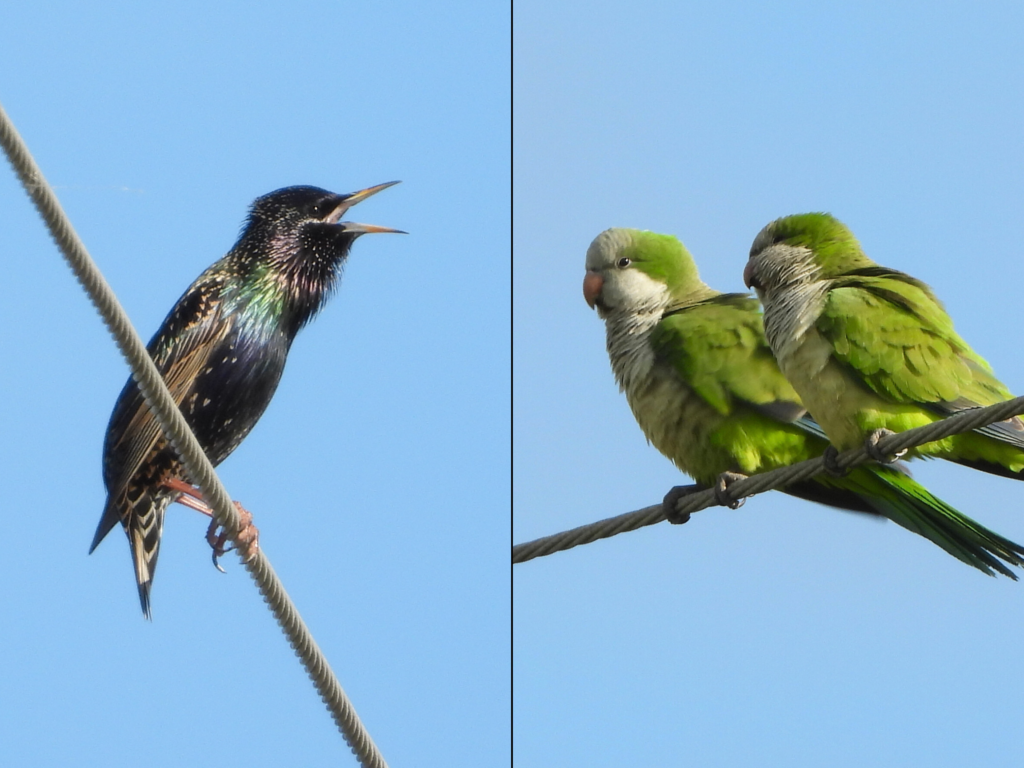
Photo by Celeste Silling Caption: European Starling and Monk Parakeets

By Celeste Silling An invasive species is one that is nonnative to a region, thrives in that region, and whose introduction causes harm. This harm can come in the form of environmental damage, economic damage, or damage to human health. Invasive species can be any kind of living organism, including plants, fungi, insects, mammals, and even birds! There are several invasive bird species on the Upper Texas Coast, including the European Starling and Monk Parakeet. The European Starling originated, unsurprisingly, in Europe. Most sources trace their introduction back to a number of intentional releases of the bird into America. Most famously, a man named Eugene Schieffelin released about 100 European Starlings into Central Park in New York City in the 1890’s. The story (and this part is much debated) goes that Schieffelin, who was a devoted fan of William Shakespeare, wanted to introduce the starlings because Shakespeare had mentioned them in his writings. Whether motivated by Shakespeare or not, it appears that Schieffelin got what he wanted; North America is now riddled with an estimated 150 million European Starlings, making them one of the most common species in America. With such a booming population, Starlings now take vital nesting and foraging habitat away from native species. They also damage agricultural property and spread disease in livestock. In fact, the USDA estimated that Starlings cause about $800 million of agricultural damage every year. Monk Parakeets have a very different backstory. This bird is native to South America, from central Bolivia and southern Brazil south to central Argentina. It was imported into the U.S. and other countries as part of the pet trade. Many of the parakeets were released or escaped, and they eventually formed breeding populations. Today, there are breeding populations in several countries and U.S. states, including Texas. While the Monk Parakeets do take some resources from native wildlife, they mainly do damage to electric utility facilities. Here in the U.S., away from their natural breeding habitat, the parakeets commonly nest on electric utility substations, electric poles, and towers. The birds’ nests can complete circuits between two pieces of equipment, resulting in fire. While a fire-starting parakeet might sound bizarre and unlikely, this problem is more common than you might think, and the afflicted power providers put millions of dollars into removing these nests every year. Even more concerning, this invasive species has the capacity to cause fires and dangerous power outages. Of course, the European Starlings never asked to live in Central Park, and the Monk Parakeets never asked to be pets. They were introduced to this continent entirely at the whim of humans! It is therefore up to us to recognize our own mistakes and learn from them. The term “invasive” might bring to mind an invading army, intending to colonize and destroy. That isn’t the case here. These invasive birds were brought to a new place and did what they naturally do- they survived, bred, and thrived, all without malicious intent.

